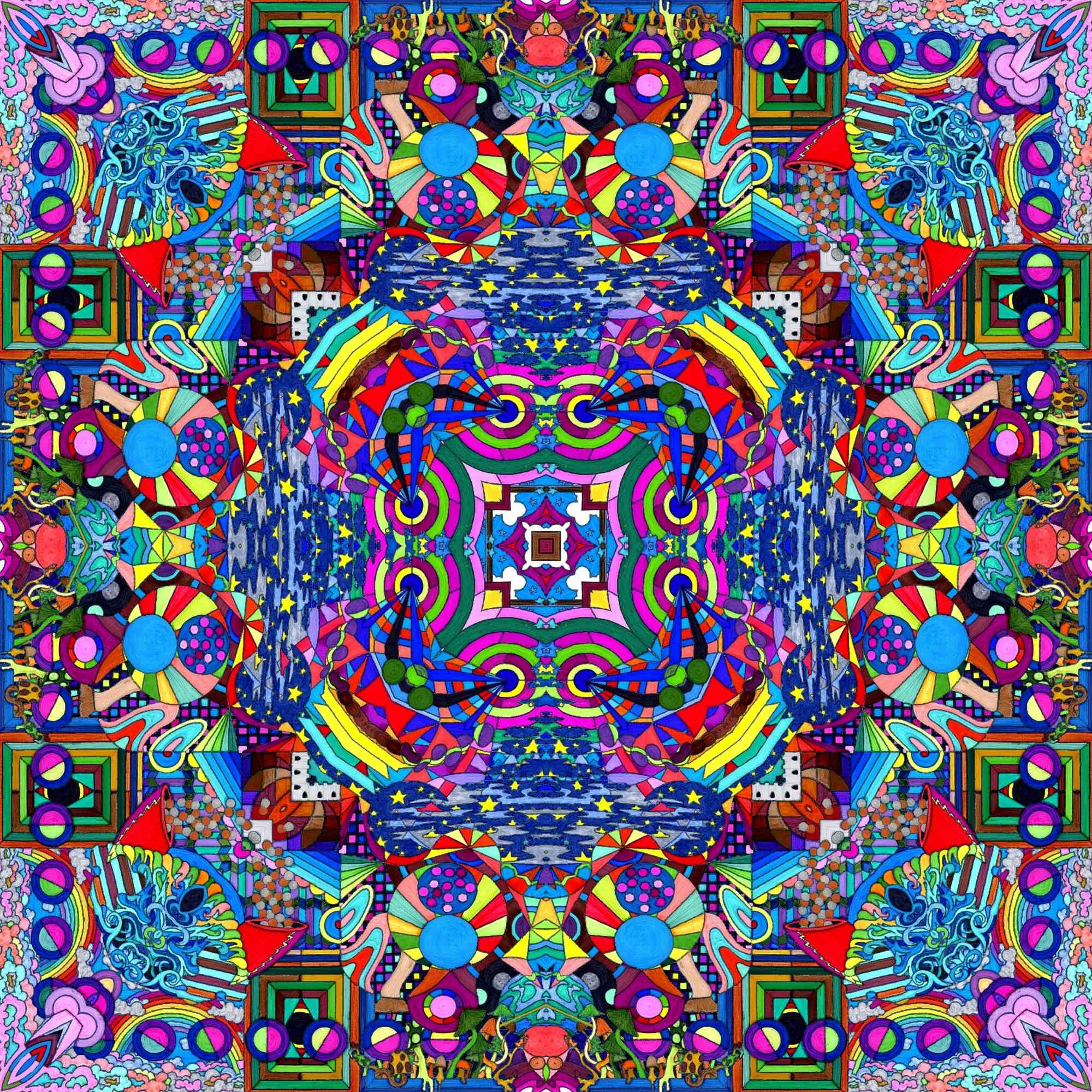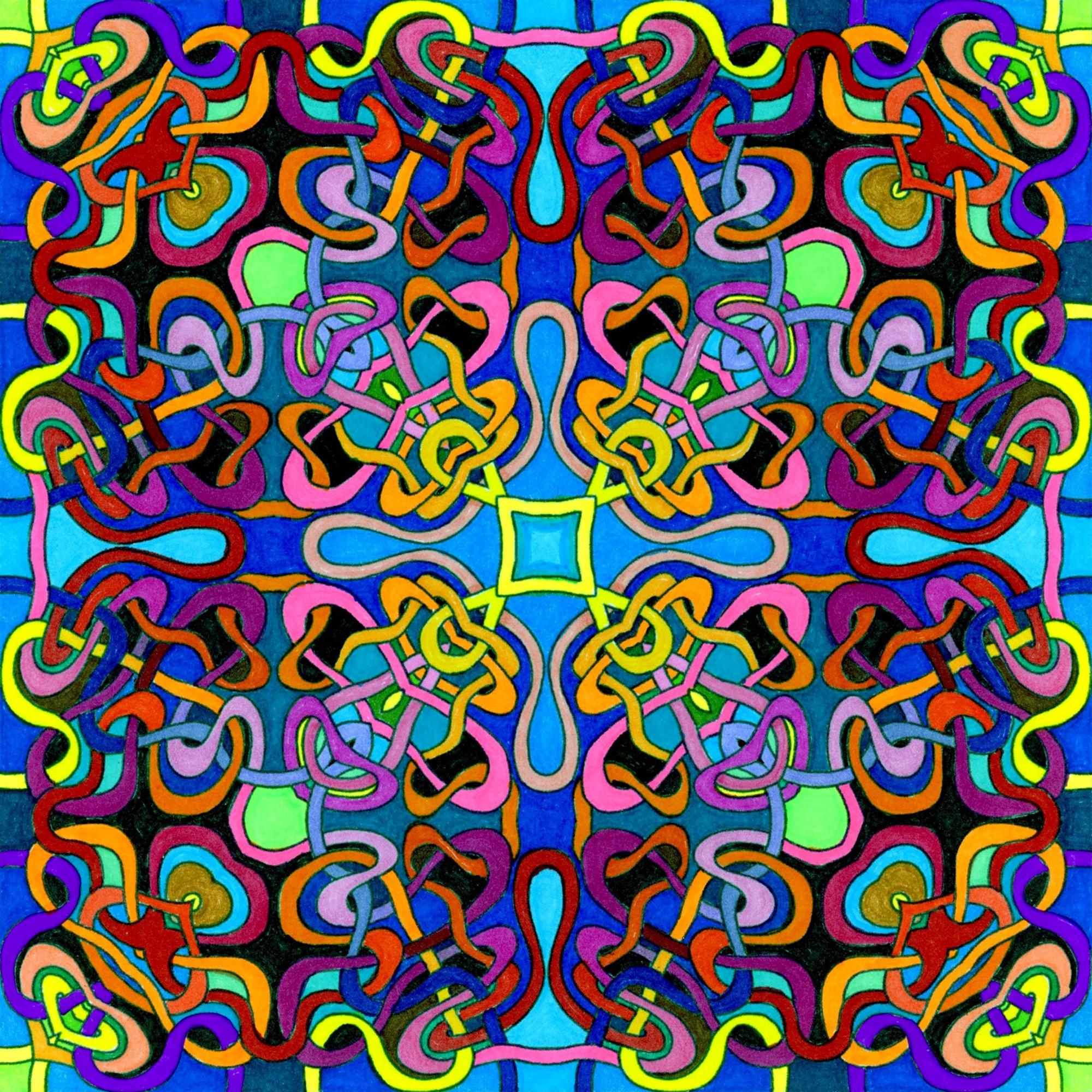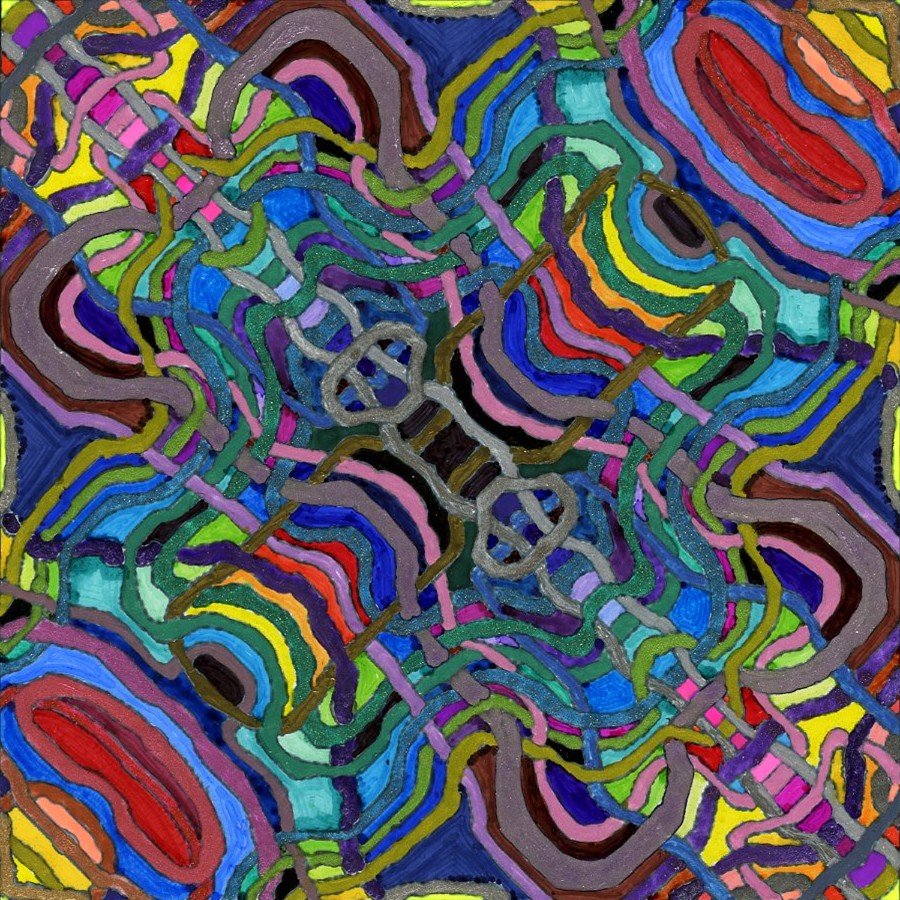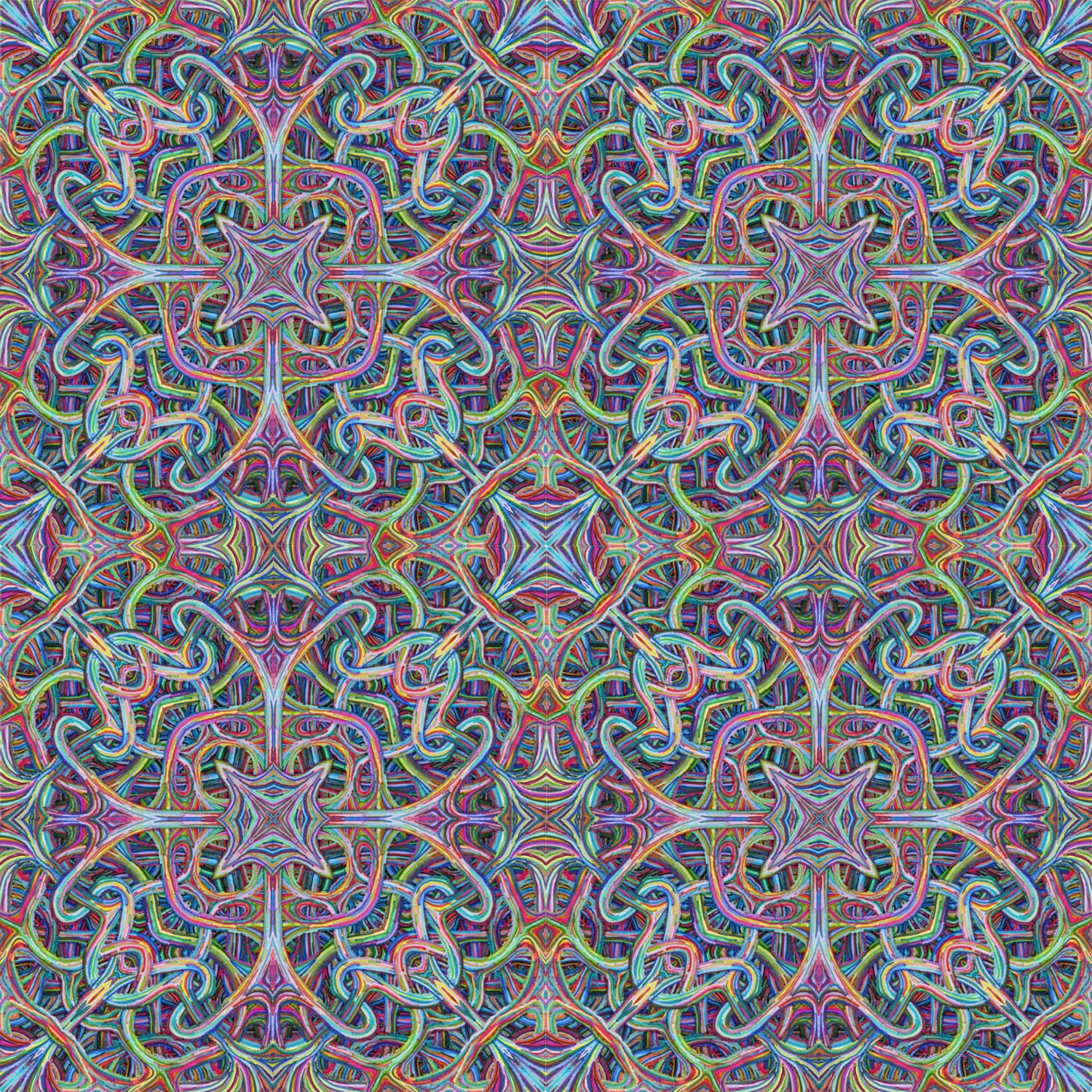Quadulations
are square drawings that are diagonally cropped, one of the halves copied and placed together in mirror-image to make a square. This combination is copied so that there are four duplicates. These are then arranged in a larger square with the identical corner lines, where the mirror-images meet, aimed to the middle of that larger square. This forms the Quadulation. So it is actually eight separate but identical pieces of the original art, mirror-imaged to the adjacent sections on either side.



Quadulation designs can be grouped to form repeating patterns in virtually endless combinations. The pattern below was derived from combining parts of the three Quadulations at the very top of this page.








These three designs have all been derived from the drawing Myndlspyll Smoke, which is an extremely complex subject and is displayed on the Major Works page. I cropped out square sections of the colored in piece order to Quadualte it.








Each of the five horizontal rows of the above Quadulations were derived from the same five original drawings, demonstrating the versatility of variation that is possible. A single square work of art can produce sixteen Quadualtions.
The more complicated and busy the original subject, the more elaborate the Quadualtion.
The colorful drawing below, titled Pax Cube Viscom, exhibits this quite well, as the two Quadualtions below it illustrate.




Quadulating can be done with line drawings as well, creating delightful mandala designs that can be colored in as original work.
The middle of the three Quadulated line drawings below is from the original line drawing of Myndlspyll, before that was colored in. I have not colored this particular Quadulation in yet.
The other two are Quadualtions which I have colored in with markers and gel pens. Each of those is displayed under the line work.





Quadulations can be created that are not geometrically centered, yet still having balance and cohesiveness. The following series is of one such creation. I constructed an off-center line drawing Quadulation, colored it in, then used that art to make a larger Quadulation, which is the second sample. This then I copied and repeated to create the pattern which is the third sample. The rough look of the original is due to the metallic gel pens and its relatively small size, which is about two inches square.
Then follows a variety of patterns made from Quadulations of my work.
For more patterns of similar nature, go to the Patterns page.
Enjoy!






Blutricity
Mystic Lattice
Neural Cohesion